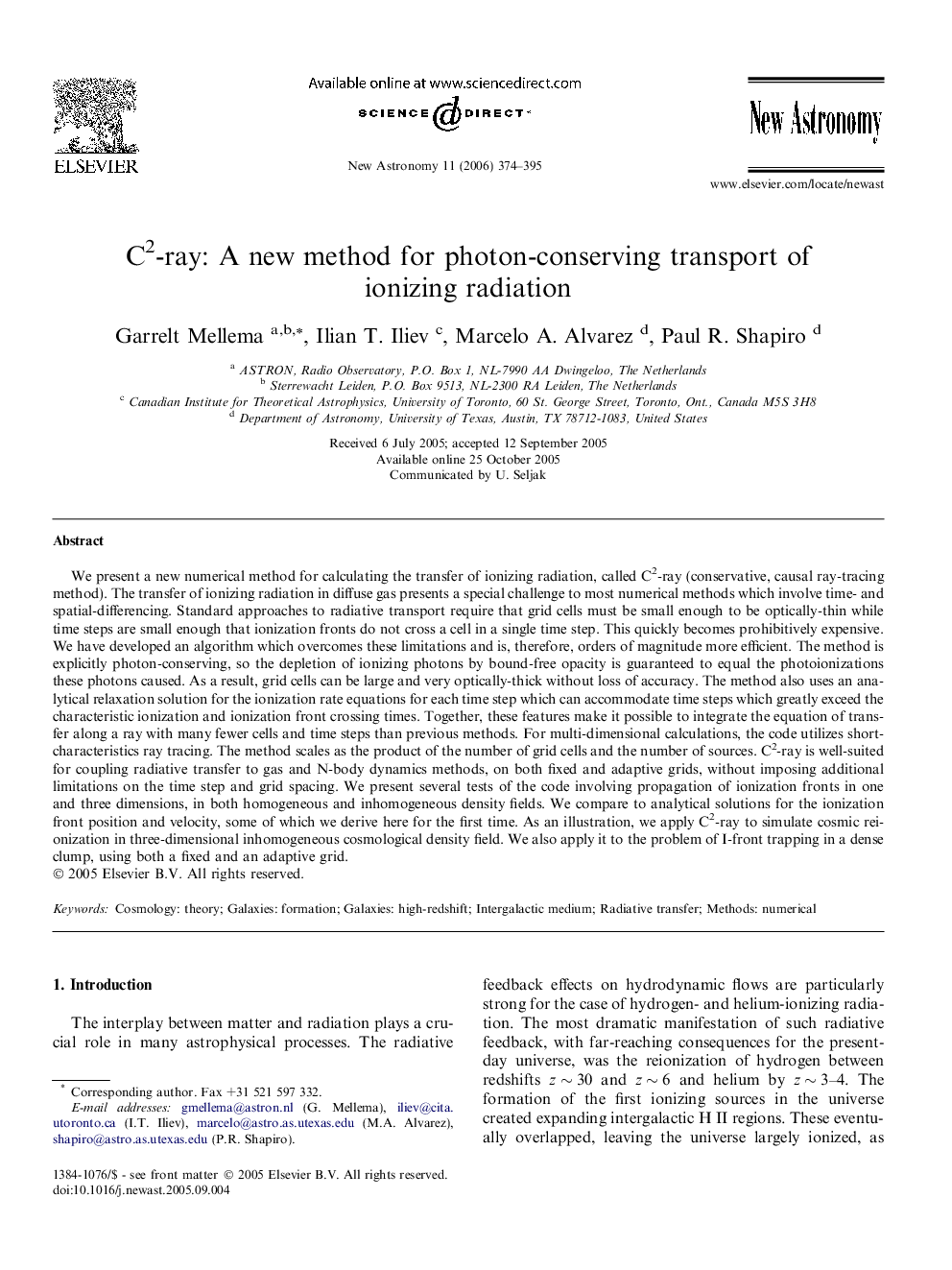| Article ID | Journal | Published Year | Pages | File Type |
|---|---|---|---|---|
| 1779751 | New Astronomy | 2006 | 22 Pages |
We present a new numerical method for calculating the transfer of ionizing radiation, called C2-ray (conservative, causal ray-tracing method). The transfer of ionizing radiation in diffuse gas presents a special challenge to most numerical methods which involve time- and spatial-differencing. Standard approaches to radiative transport require that grid cells must be small enough to be optically-thin while time steps are small enough that ionization fronts do not cross a cell in a single time step. This quickly becomes prohibitively expensive. We have developed an algorithm which overcomes these limitations and is, therefore, orders of magnitude more efficient. The method is explicitly photon-conserving, so the depletion of ionizing photons by bound-free opacity is guaranteed to equal the photoionizations these photons caused. As a result, grid cells can be large and very optically-thick without loss of accuracy. The method also uses an analytical relaxation solution for the ionization rate equations for each time step which can accommodate time steps which greatly exceed the characteristic ionization and ionization front crossing times. Together, these features make it possible to integrate the equation of transfer along a ray with many fewer cells and time steps than previous methods. For multi-dimensional calculations, the code utilizes short-characteristics ray tracing. The method scales as the product of the number of grid cells and the number of sources. C2-ray is well-suited for coupling radiative transfer to gas and N-body dynamics methods, on both fixed and adaptive grids, without imposing additional limitations on the time step and grid spacing. We present several tests of the code involving propagation of ionization fronts in one and three dimensions, in both homogeneous and inhomogeneous density fields. We compare to analytical solutions for the ionization front position and velocity, some of which we derive here for the first time. As an illustration, we apply C2-ray to simulate cosmic reionization in three-dimensional inhomogeneous cosmological density field. We also apply it to the problem of I-front trapping in a dense clump, using both a fixed and an adaptive grid.
